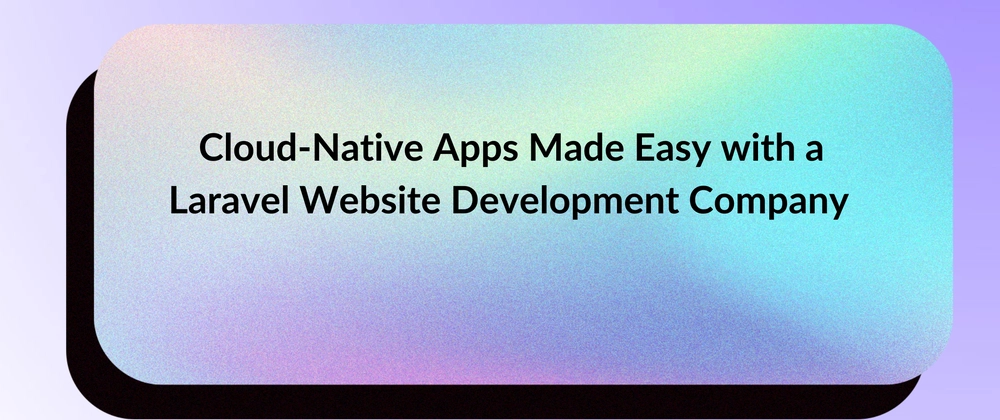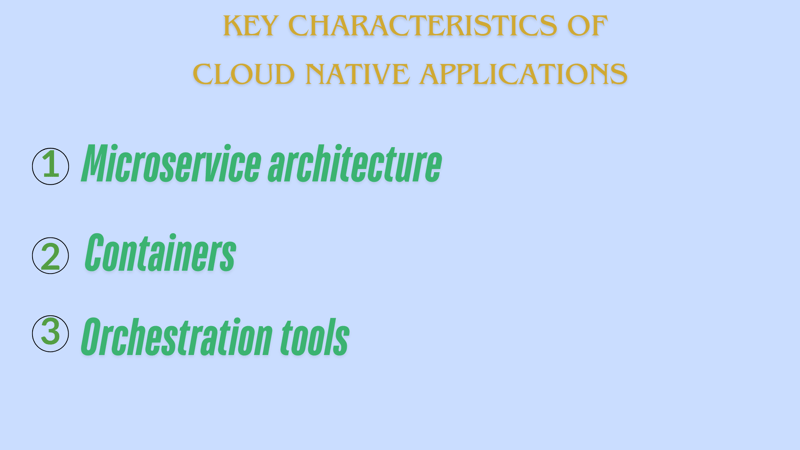Businesses are rapidly transitioning to cloud-native applications to leverage the benefits of scalability, flexibility, and cost efficiency. A Laravel website development company plays a pivotal role in simplifying this transformation by building robust, scalable, and secure cloud-native apps tailored to meet business needs. Laravel, with its elegant syntax and powerful features, has emerged as one of the most popular PHP frameworks for developing cloud-ready applications.
What is Cloud Native?
Cloud Native refers to an approach for building and running applications that fully leverage the capabilities of cloud computing. These applications are designed to be scalable, resilient, and flexible, enabling businesses to adapt quickly to changing demands. Unlike traditional applications, which are often adapted for the cloud, cloud-native applications are built specifically for cloud environments from the ground up.
Key characteristics of Cloud Native applications
Microservice architecture- Application are broken into smaller, independently deployable components.
Containers- Package these components for portability
Orchestration tools- Tools like Kubernetes are used to manage resources dynamically.
By adopting cloud-native technologies, organizations can achieve greater agility, reduce operational costs, and deliver continuous innovation to meet customer expectations in dynamic markets.
Cloud-native applications are designed to run seamlessly within cloud environments, leveraging microservices architecture and containerization for agility and resilience. Laravel's ecosystem aligns perfectly with these principles, offering tools like Laravel Vapor for serverless deployment and seamless integration with cloud platforms like AWS. Businesses can rely on a Laravel website development company to create applications that are not only scalable but also optimized for high performance and security, ensuring a competitive edge in the digital landscape.
Why Choose Laravel for Cloud-Native Applications?
Scalability: Laravel supports microservices architecture, making it ideal for building modular applications that can scale independently.
Serverless Deployment: Tools like Laravel Vapor enable serverless deployment, reducing infrastructure management overhead while improving application performance.
Efficient Development: Features like Eloquent ORM and Blade templating streamline development, ensuring faster delivery of high-quality applications.
Custom Laravel Development for Cloud-Native Solutions
For businesses seeking tailored solutions, custom Laravel Development is the key to unlocking the full potential of cloud-native apps. By leveraging Laravel’s extensive ecosystem and integrating third-party APIs or services, developers can create bespoke applications that cater to specific business requirements. Whether it's an e-commerce platform, CRM system, or enterprise-grade application, custom development ensures that every feature aligns perfectly with business goals.
Difference Between Cloud-Native Applications and Traditional Applications
1. Architecture
Cloud Native Application: Built using a microservice architecture, dividing functionalities into smaller, independent services. These services are containerized (e.g., using Docker) and orchestrated (e.g., via Kubernetes), enabling scalability and flexibility
Traditional Applications: Typically follow a Monolithic Architecture, where all functionalities are tightly integrated into a single codebase. This makes them less flexible and harder to scale.
2. Development Approach
Cloud-Native Applications: Designed specifically for cloud environments, leveraging DevOps practices like continuous integration/continuous deployment (CI/CD). They enable rapid updates and shorter development cycles
Traditional Applications: Developed using legacy methods with long development cycles. Updates often require significant downtime or full-stack redeployment
3. Scalability
Cloud-Native Applications: Highly scalable due to their modular design. Individual microservices can scale independently based on demand, ensuring efficient resource utilization26.
Traditional Applications: Scaling is more challenging as the entire application must be scaled together, often leading to resource inefficiencies
4. Deployment
Cloud-Native Applications: Deployed in cloud environments using serverless computing or container orchestration platforms. They are platform-agnostic and can run across public, private, or hybrid clouds2
Traditional Applications: Typically deployed on on-premises servers or virtual machines, making them less portable and harder to migrate to different environments
5. Resilience
Cloud-Native Applications: Built with redundancy and fault tolerance in mind. They can handle failures gracefully by redistributing workloads across services
Traditional Applications: More prone to downtime during failures due to their tightly coupled architecture
6. Cost Efficiency
Cloud-Native Applications: Operate on a pay-as-you-go model, where resources are allocated dynamically based on usage. This reduces costs for unused resources
Traditional Applications: Require pre-provisioned infrastructure, leading to higher costs even when resources are underutilized3
7. Flexibility and Portability
Cloud-Native Applications: Platform-agnostic and easily portable across different cloud providers or environments due to containerization and API-driven design4
Traditional Applications: Often tied to specific infrastructure, making migration or portability complex and costly
8. Maintenance and Updates
Cloud-Native Applications: Support frequent updates with minimal disruption thanks to CI/CD pipelines and modular design56.
Traditional Applications: Updates often require significant downtime as changes affect the entire application stack
Partnering with a Laravel Website Development Company
A reliable Laravel website development company brings expertise in building cloud-native applications from scratch or modernizing legacy systems for the cloud. Their deep understanding of Laravel's capabilities ensures businesses benefit from scalable architecture, robust security measures, and seamless integrations with cloud services like AWS or Google Cloud.
With the right partner, businesses can focus on growth while leaving the complexities of cloud-native application development to experienced professionals. By combining Laravel's powerful features with expert guidance, companies can achieve efficient workflows and deliver exceptional user experiences through their digital platforms.
Conclusion
The rise of cloud-native applications has transformed how businesses operate in the digital world. With its robust framework and extensive toolset, Laravel simplifies the process of building scalable and secure cloud-native apps tailored to unique business needs. By partnering with a trusted Laravel website development company, businesses can unlock new opportunities for growth while ensuring their applications remain future-ready in an ever-evolving technological landscape. Whether it's through serverless deployment or custom Laravel development, leveraging Laravel's capabilities is a surefire way to stay ahead in today's competitive market.




Top comments (0)